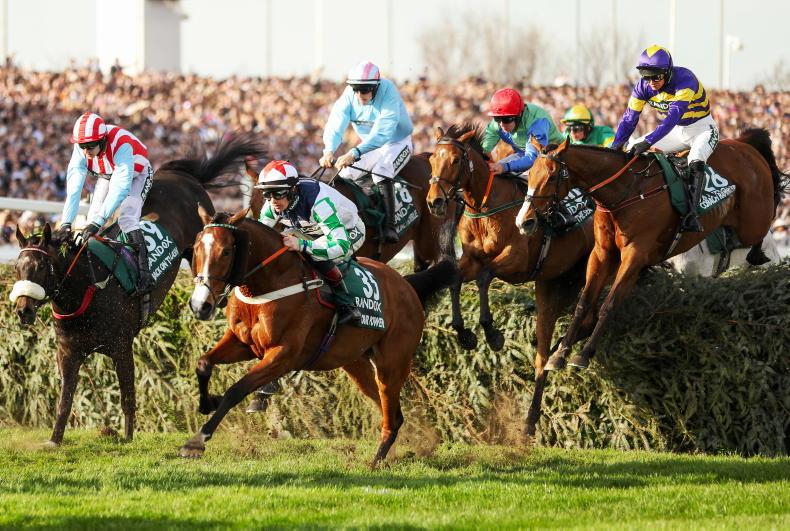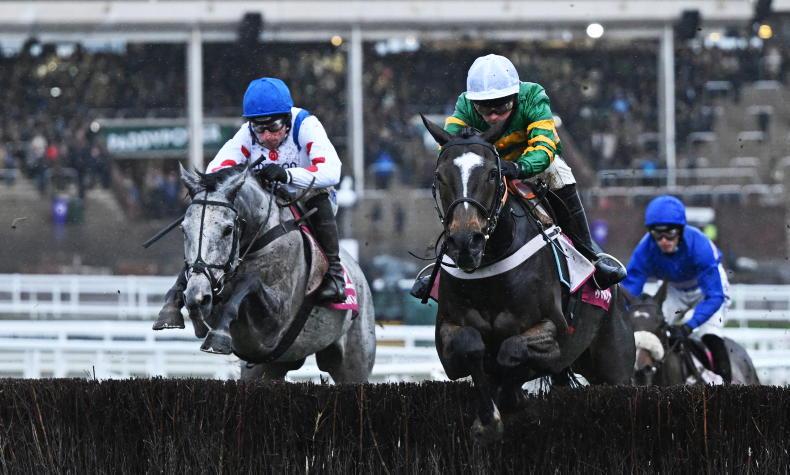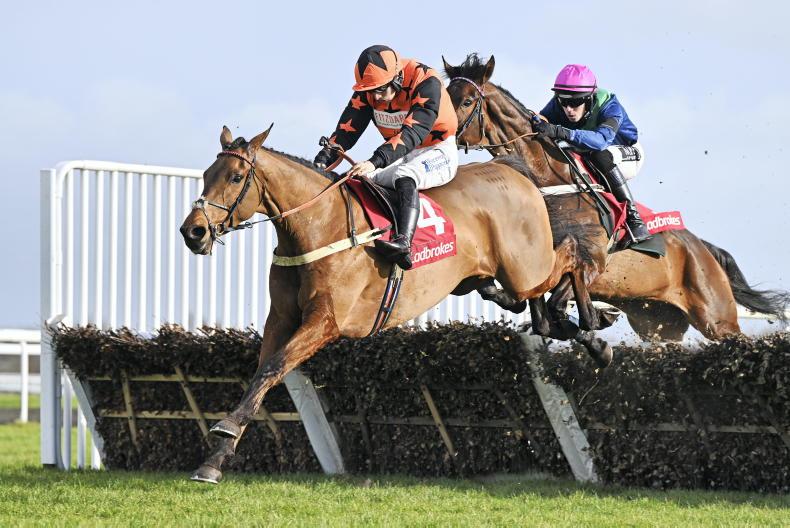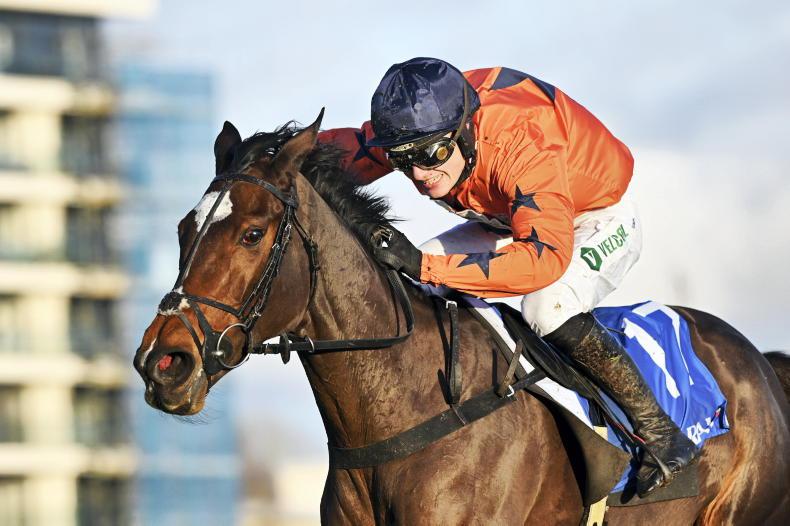The maximum number of runners in the Grand National at Aintree will be reduced from 40 to 34 next year.
This is the most significant of a number of changes to the race announced by the Jockey Club, supported by the British Horseracing Authority (BHA), on Thursday morning.
The other key changes are:
o Reducing the opportunity for horses to build up too much initial speed by moving the first fence closer to the start and implementing a standing start
o Providing the best possible ground conditions for the horses by bringing the start time forward
o Investing in further developments to the course infrastructure
o Ensuring that the horses participating are in the best condition to do so
The Jockey Club says these changes follow an evidence-based review process designed to preserve the thrill, characteristics, and challenges of the famous race, while prioritising the welfare of horses and riders.
The review process included gathering insights from independent research papers into racehorse welfare, statistical data analysis relating to the race over many years and canvasing the views of the racing industry, the BHA, World Horse Welfare and a range of other stakeholders including jockeys and trainers.
Research confirmed the widely-held view that there is a direct correlation between the number of runners in a race and the risk of falling, hence the reduction in field size.
The first fence will be moved 60 yards closer to the start, reducing the opportunity for horses to build up too much speed at the start of the race. Implementing a standing start - that will apply to all races over the Grand National fences - is also expected to reduce the chances of early casualties.
It is intended to bring forward the start time of the race to help ensure that Aintree can provide the optimal ground conditions - the ground at the course can dry out quickly on a breezy, sunny April afternoon;
Horses will no longer be led by a handler on-course during the pre-Grand National parade and will instead be released at the end of the horsewalk to then canter in front of the grandstands to allow them to prepare for their race in their own time.
Alterations will be made to the alignment of running rail on the inside of the Grand National course to assist with the early capture of loose horses. Fence 11 will be reduced in height by two inches (from 5ft to 4ft 10in) on the take-off side, with some ‘levelling off’ on landing side to reduce the height of the drop.
Foam and rubber boards will be introduced at every fence. There will be further investing in pop-up irrigation to allow for more effective watering of the course and the paddock walkways will be widened.
The BHA will continue to develop the pre-race veterinary protocols, and the minimum handicap rating for all horses running in the Grand National will be raised to 130. This is an increase from the current minimum rating of 125 and brings the Grand National minimum handicap rating in line with Grade 1 races, which are also 130.
The Grand National Review Panel, a group of industry experts who assess the suitability of every horse entered to run over the Grand National fences, will further enhance its procedures to closely scrutinise horses entered in the race that have made jumping errors in 50% or more of their last eight races, before allowing them to run.
"Iconic race"
Retired jockey Ruby Walsh, who rode two Grand National winners on Papillon (2000) and Hedgehunter (2005) and is now a leading pundit on Racing TV and ITV Racing, remarked: “The Grand National is the showcase event for a sport I love dearly. It’s iconic and I don’t think you can overstate how important the Grand National is – it’s a Saturday in April when non-racing people watch our sport. People enjoy it and it’s up to us in racing to make sure that they continue to enjoy it.
“I think these changes represent the evolution of the Grand National. The world is ever-changing and the Grand National and indeed horseracing, like any other sport, has to be prepared to change. Risk can never be removed but you have to try and minimise it.
“Horse welfare is a huge part of horseracing – it’s a team sport between horse and rider and we are responsible for the welfare of the horse. I think the changes announced today by The Jockey Club will enhance the Grand National as a horse race and help to ensure its future.
“I would say the biggest effect of the earlier start time will be with the ground. We all know what a big conversation climate change is in the world and it’s very hard to keep the whole of the Grand National course on the soft side of good with the race being run later in the afternoon.
“With the rolling start, horses tended to bunch towards the inside but with the re-introduction of a standing start they will have to be spread out across the track which will give them more room going towards the first fence. The first fence is also going to be closer to when jockeys look up and see it they are more likely to be in a straight line and they should jump it before they track across the course. The effect of that should hopefully be to create less speed. The slower you go, the safer things are. Horses are competitive and will race each other but these changes should help to slow down both horse and rider.
“An effect of being able to bypass fences and the levelling off on the landing sides of fences means that more runners bunch towards the inside and therefore the reduction in field size will in my opinion make a considerable difference.
“You hope small things make for big progress. A lot of thought and effort has gone into this process – it was a proper and thorough review. For me, it’s evolution. It was 10 years since the last changes were made and you can look and see what has worked and what needs to be evolved.
“There are lots of people who don’t like change but all sports change. Soccer is not the same game it was 30 or even 15 years ago and looking at the Rugby World Cup, rugby has had to evolve. Racing is the same in that we have to evolve to ensure the future of the sport.”
Nevin Truesdale, chief executive of the Jockey Club, said the changes to the Grand National are part of the organisation’s “relentless focus on welfare”. He said: “The Randox Grand National is the most iconic race in the world and one which transcends our sport. It is part of the fabric of British sporting life alongside the likes of Wimbledon, the FA Cup and the Open golf and is loved and watched by millions of people all over the world every year. For many it is also their introduction to horseracing and I believe that a competitive, fair and safe Randox Grand National is one of the best ways of ensuring the sport continues to thrive for generations to come and remains an important part of Britain’s culture and economy.
“That means our sport, like many other sports have done, needs to recognise when action needs to be taken to evolve because the safety and care of horses and jockeys will always be our number one priority. In making these changes at Aintree we are underlining our relentless focus on welfare and our commitment to powering the future of British racing.”
Dual Grand National-winning trainer Lucinda Russell, who saddled One For Arthur (2017) and Corach Rambler (2023) to success in the Aintree spectacular, gave her support to the changes announced today. She said: “I think these changes announced today are a clear sign again that Aintree and the Jockey Club continue to be proactive in trying to support the Grand National and the wider sport of horseracing.
“I am fully supportive of reducing the field size and I don’t feel that six fewer runners will make a difference to the heritage of the race – it can only be a good step and hopefully will help improve the start procedures. As regards moving the first fence, the further you go then the more speed you are going to pick up so logically it should mean they approach it slower. I know that it’s tricky for the jockeys to manage their speed as it’s such an important race and everyone is vying for a good position.
“Aintree do a wonderful job in always producing perfect ground conditions; it is ground on the soft side of good which is the way it should be. The level of welfare in racing is phenomenal and something we should be proud of. Once again Aintree is trying to make things safer.”
There was one fatality in the 2023 Grand National. Hill Sixteen, died after sustaining a fatal injury at the first fence.


 This is a subscriber-only article
This is a subscriber-only article
 It looks like you're browsing in private mode
It looks like you're browsing in private mode










SHARING OPTIONS: